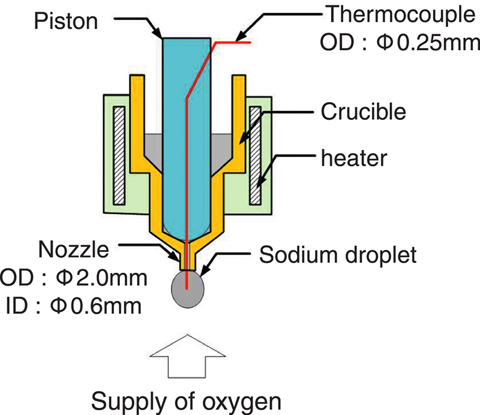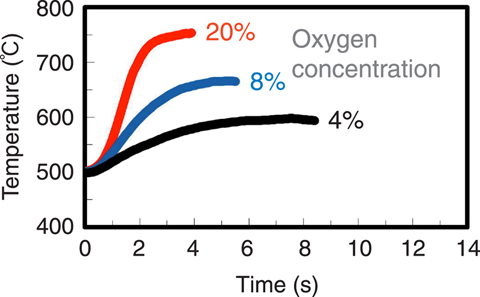
Fig.1-15 Experimental apparatus of sodium combustion
Fig.1-16 Event transition of sodium combustion 20%O2

Fig.1-17 Internal temperature of the liquid droplet
Fig.1-18 Growth of the columnar oxides
The Fast Breeder Reactor (FBR) is being designed so that the consequences from accidents are mitigated. In case of the coolant (sodium) leakage from the secondary loop, sodium reacts with oxygen in the air and begins to burn at high temperature. Such sodium fire can be extinguished by cooling or oxygen cutoff using nitrogen gas injection.
The FBR plant must be designed to maintain safety even if a sodium fire accident happens. Thus, it is necessary to clarify the combustion process of sodium in detail to evaluate the consequences of the accident. A simple test device as shown in Fig.1-15 was set in a glove box and operated to observe the reaction interface easily. In the device, a sodium droplet was reacted with oxygen supplied from below. Visualization using a high speed camera and measurement of the internal temperature of the liquid sodium droplet were done simultaneously.
This simultaneous measurement enables us to know the correlation between the sodium internal temperature and the surface oxide growth. The combustion of sodium starts with the surface oxidization reaction, and changes to the gas phase reaction gradually (Fig.1-16).
The sodium temperature increased rapidly, reaching a value at which with heat radiation balanced the reaction heat, this value being influenced by the oxygen concentration (Fig.1-17). During the transition to the gas phase reaction from the surface oxidization reaction, it was observed that unique columnar oxides formed and grew on the surface of sodium which was covered by the white thin film oxide. This columnar oxide grew up greatly when the temperature of sodium was low or the oxygen concentration was low. To observe the growth of the columnar oxide in detail, the sodium was set on a wire net and reacted by supplying oxygen; up-close photos were taken by the high-speed camera. From these observations, it was clarified that the columnar oxide supplied sodium to the reactive interface, and the combustion continued as a result (Fig.1-18).
This research contributes to progress in combustion analysis technique by elucidating the mass shift mechanism and the growth mechanism in the sodium oxidation reaction. We hope to clarify the combustion mechanism based on this basic understanding gained here, because understanding of the sodium reaction phenomenon in a variety of plant environments is desired.